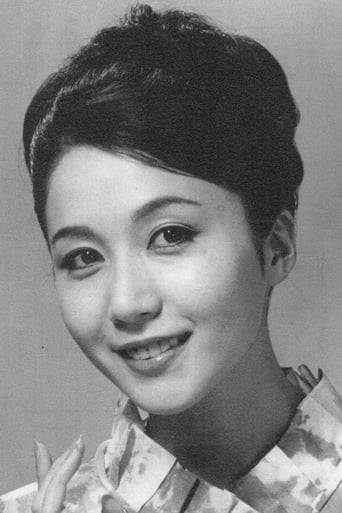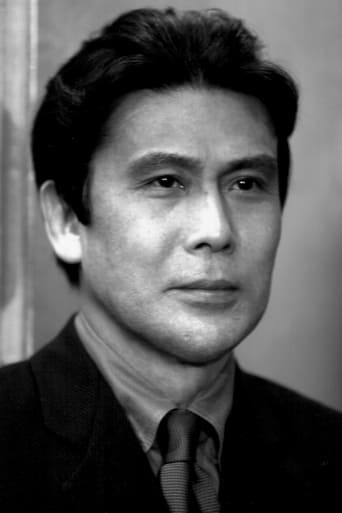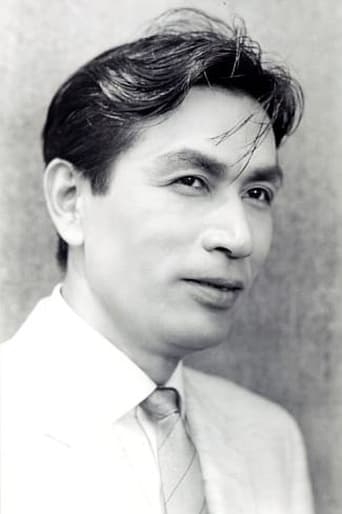Beystiman
It's fun, it's light, [but] it has a hard time when its tries to get heavy.
SparkMore
n my opinion it was a great movie with some interesting elements, even though having some plot holes and the ending probably was just too messy and crammed together, but still fun to watch and not your casual movie that is similar to all other ones.
Clarissa Mora
The tone of this movie is interesting -- the stakes are both dramatic and high, but it's balanced with a lot of fun, tongue and cheek dialogue.
Kayden
This is a dark and sometimes deeply uncomfortable drama
Riley Porter
It's good, not great.Visually this film is very strong. The framing and composition of mostly every shot is pleasing to the eye and elevates the scene it captures. The choreography of the action is generally pretty great, though there are a few moments where I had to wonder why it was that everyone with a sword felt obligated to attack one at a time no matter what. This is an issue with a lot films in the action genre, but it seems that every chanbara film I've ever seen, which is a fair amount, has this problem. Maybe there's something about group sword fighting I'm not aware of. Who knows. The issues with the choreography are few and far between though and overall this film is an absolute joy to look at.The presentation becomes a bit more questionable when it comes to the sound of the film. The noises that the swords make when they clash into one another during some, or most, of the fighting is a bit exaggerated to the point of being a touch goofy. I don't I was personally bothered by it that much and I even found enjoyment in how over the top it was, but I could see people becoming very irritated with the sounds of the sword strikes. The soundtrack itself is also potentially hazardous. Rather than create a score which evokes the early eighteenth century setting, the soundtrack feels like it was created for a cops and robbers thriller. I get the impression that is intentional. The film is meant to be a sort of gangster flick set in feudal Japan, juxtaposing the modern story elements with a period setting. That's all well and good, but it might have been better to go with a score that fit the setting rather than a modern sound which was doomed to date the film in a way the samurai swordplay never could.The story itself is good generally. It does run into the potential issue of a gang of vaguely defined characters who all sort of dress and act the same with a few exceptions. Besides the core group of main characters I sometimes had a difficult time keeping track of who was who and what they were after. That being said, Tatsuya Nakadai brings a lot to the table and the film is well acted despite some weakness in the character writing. The story gets a little muddled around the third act when the motivations of certain characters become a bit more difficult to decipher, but the action keeps the stakes clear on a more scene by scene basis. If you like the genre then there's a good chance you'll like the film. If, like myself, you're a big fan of Tatsuya Nakadai then I would definitely recommend it. So far as Gosha is concerned, this is the first film I've seen from him but it makes me curious about his other work. Finally, and I probably don't need to say this at this point, it's a bit long, and it's debatable whether or not it really has to be. Still good though.
chaos-rampant
There's such an abundance of great material in BSQ that it could be split in two separate movies and both would be great in their own right. By the end of the 160 minutes it lasts - which just whiz by - Hideo Gosha has so masterfully climaxed his plot and subplots that one could sit down and easily create another 5-10 great scenes.But first things first; however fantastic a movie BSQ is, it is best appreciated by experienced Japanese film fans. That's probably where some of the (silly) criticisms leveled at the movie come from - that it's confusing, inconsistent etc. It's not if one is armed with sufficient knowledge of how Japanese films work. It is after all targeted at Japanese audiences first and foremost.The seasoned genre veteran however is in for a treat. The first half of BSQ is a complex crime movie that is disguised as a chambara. The opening scene, a violent swordfight inside a house manor, is only a (both visual and narrative) distraction from what is actually going on: a robbery. The leader of this band of experienced burglars is Kumokiri Nizaemon. For the opening scene he remains unseen - as much an elusive force to the viewer as he is to the authorities. Our first impression of Kumokiri as the bandits report to him of the robbery's successful outcome is only his voice coming from behind a screen. But there's no mistaking THAT voice: it's the thunderous boom of Tatsuya Nakadai. Here Gosha both with-helds information from the casual viewer (Kumokiri's figure) but also rewards the genre fan who recognizes Nakadai.After the second robbery we learn more about this criminal mastermind. The revelation of Kumokiri's past is what sets the political aspect of BSQ in motion and also anticipates the climactic ending. It is however the way that Gosha repeatedly opens the gap between expectation and result, the themes he explores and his superb direction that make BSQ what it is. He once again goes back to favourite themes he dealt with in previous outings, the oppression of samurai authority and revenge (GOYOKIN, SWORD OF THE BEAST, THREE OUTLAW SAMURAI) one one hand, identity (HITOKIRI) on the other.One of the most astonishing scenes is the surrender to the samurai police of Kumokiri's brother in his place. In an earlier scene the brother tried to convince Kumokiri to join him in the assassination of the Owari lord that betrayed them, killed their families and forced them to become fugitives (and Kumokiri a bandit). Kumokiri refused, dedicated in his plan for one final robbery that would keep his name - ironically not his real name but this false persona - feared and respected throughout history. When Kumokiri's brother surrenders in his brother's place it becomes apparent - through his words also - that it wasn't only revenge he was after but mostly a dignified way to end a meaningless life. He finds peace and redemption by sacrificing himself for his brother - ironically a form of seppuku in itself, exactly what he was ordered to do by the Owari lord 10 years ago.As if all that wasn't enough, Gosha goes one step further and twists the scene a little more: the head of the samurai squad confesses his admiration and respect for this false Kumokiri (and the bravery of his surrender) with teary eyes. And Gosha twists the plot AGAIN, tension and meaning bursting with every twist of his narrative screwdriver. After the false Kumokiri's execution, it is ordered that his name be erased from all records - the samurai system's final revenge on Kumokiri's mythos and a plot point that recalls Masaki Kobayashi's ending for SEPPUKU. So when all is said and done the notoriety Kumokiri strived for was in vain.Armed with this realization Kumokiri undertakes his brother's revenge against the Owari lord in a combination of both giri (formal obligation) and ninjo (natural impulse). As with Hitokiri, where Izo Okada was stripped of his name and reputation and became Torazo the Vagrant, the loss of identity becomes a redeeming ritual for the protagonist. With every sense of identity lost, Kumokiri slices through the veils of hypocrisy. He now sees clearly and it is with this clear mind that he delivers his revenge.If we wanted to analyze Kumokiri's realization after his brother's death in terms of samurai culture we'd see that for the samurai warrior, sword discipline is not enough. The second necessary concept is sunyata ("emptiness") or "voiding the body of all consciousness until a state of no-mindedness is achieved. The fighter with "no mind" is expected to become one not just with his own weapon but with his assailant and his assailant's weapon as well". In the light of this, the huge body count Kumokiri leaves in his wake is not surprising. In the final scenes Tatsuya Nakadai (Kumokiri) undergoes a wonderful transformation: from the sad and quiet, aging bandit to a demon, as if Ryunosuke Tsukue from SWORD OF DOOM was given a new lease of life for a final battle.The beauty of BSQ is that the superb character development and handling of themes is layered within a rich plot and entertaining story. Action fans will be delighted at the huge body count. Gosha was perceptive enough to evolve with the times - the comic-book style and violence of the LONE WOLF AND CUB series is an obvious influence here. There's also some nudity but it's never crude and so Gosha manages the unthinkable; to balance between the exploitative elements that appeared in early 70's chambara and traditional samurai concepts such as the giri/ninjo moral double-bind. All within a story that runs the gamut from crime to revenge, with political undertones to please fans of Kobayashi and Eiichi Kudo and the splatter and violence to make fans of Ogami Itto and Hanzo the Razor sit down and take notice.
ldoig
I'm sure that even if you're reading this you're very possibly curious about what it's like and I would recommend it...though perhaps only if you've got nearly three hours to kill and you're heavily into samurai flicks, or I guess like Tatsuya Nakadai.Basically this is very inconsistent, with flashes of real genius (and clearly an influence on modern western directors) and then there are other parts that make no sense at all. In fairness, I gather these films tend to get badly edited and that may explain a lot and as a Westerner there are always references made in these films, or ways characters deliberately behave, that we culturally just don't understand and it doesn't help us as western viewers. However, that's not to criticise our own "anglo-saxon" notion of how a story should develop, and its not to detract from the fact that there are parts of the film that frankly don't make a lot of sense, but as said, give it a watch if you are curious, just don't worry if you go "Uh!?" a lot thinking the film is a work of demented intelligence and you don't get it...the point is parts of it just don't make sense. But still, I did find if captivating and I just ignored the dodgy bits.As for lovers of lots of blood in your samurai flick - you will definitely love parts of this. In fact, next time my friends are over I'm going to show them the gory bits! Well you know...boys...Let's just say if you've seen the end of Kurosawa's Sanjuro, this is the same, except it happens a few times more...and in colour.
shinobirastafari
Confusing and half-hearted storyline about a samurai's revenge against the clan that betrayed him. Or something like that. It's unoriginal, uninspiring, with mediocre direction, acting, and plot throughout. Definitely not one of Gosha's better movies, which is too bad, as he's really put out some good ones when working with the right team.
Nakadai Tatsuya is fun to watch as always, but he's not on screen long enough to carry your interest with this one.Avoid unless you're a big fan of either Nakadai the actor or Gosha the director (and I'm a big fan of both!)




